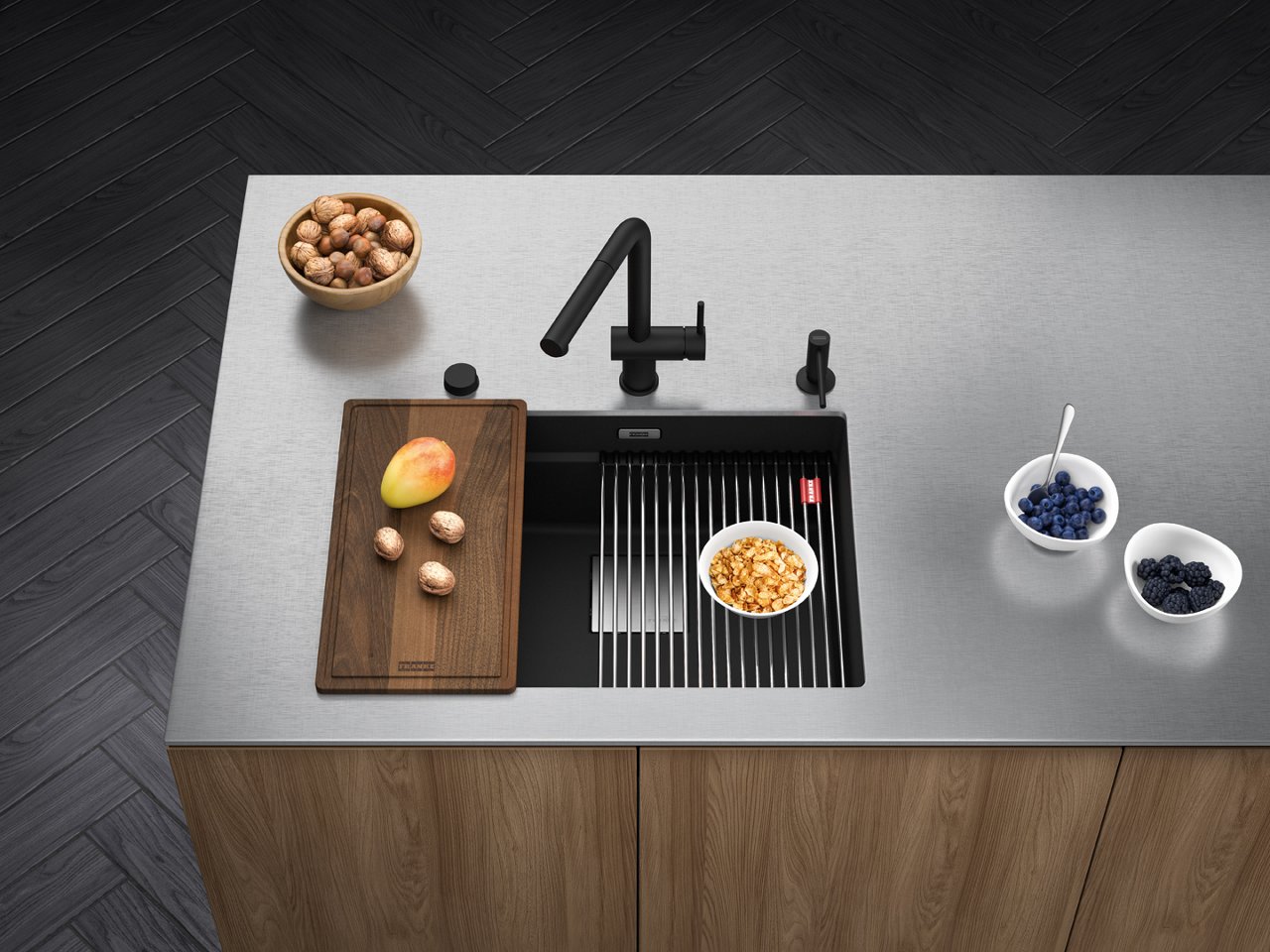Making your chosen colour last a lifetime
Advanced materials technology makes Fragranite a very tough and resilient self colour silica resin. By following our simple care and maintenance guidelines, your sink will bring lasting colour to your kitchen throughout a lifetime of normal usage.
4 simple ways to keep its good looks and sparkling finish:
- Don’t use a plastic washing up bowl in the sink. It will leave small particles of plastic behind. If these get embedded in the bottom of the sink, they’ll slowly grind away the surface. It will also localise scratching and not allow for even distribution.
- Keep strong alkalis like ammonia and caustic soda, caustic paint strippers, paint brush cleaners and neat chemical descaling agents away from your sink. Prolonged exposure to such substances may dull the surface.
- Your sink can withstand very high temperatures without marking, but it’s wise to keep very hot pans out of the sink. That’s because the accessories are less resistant to extreme heat and may be damaged.
- Hard blows or heavy pressure with a kitchen knife may chip or score the Fragranite surface, so always use a chopping board when preparing food. Note: Edges are more susceptible to damage and are more likely to chip in the main bowl.
Buy the right Cleaning Products for your Sink
Franke Homecare Pack
Tips on taking care of your Franke sink and tap.


 Instant Boiling
Instant Boiling







